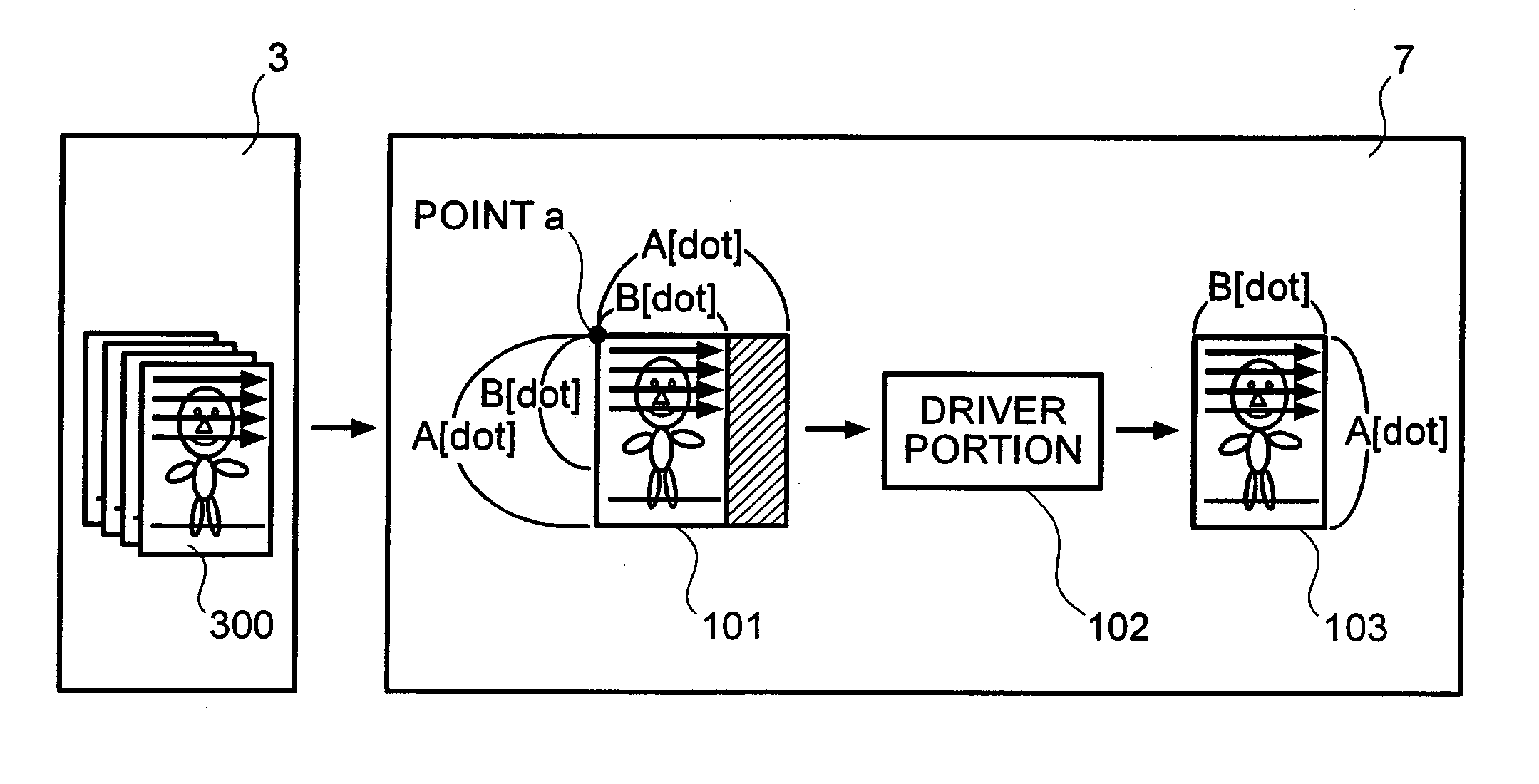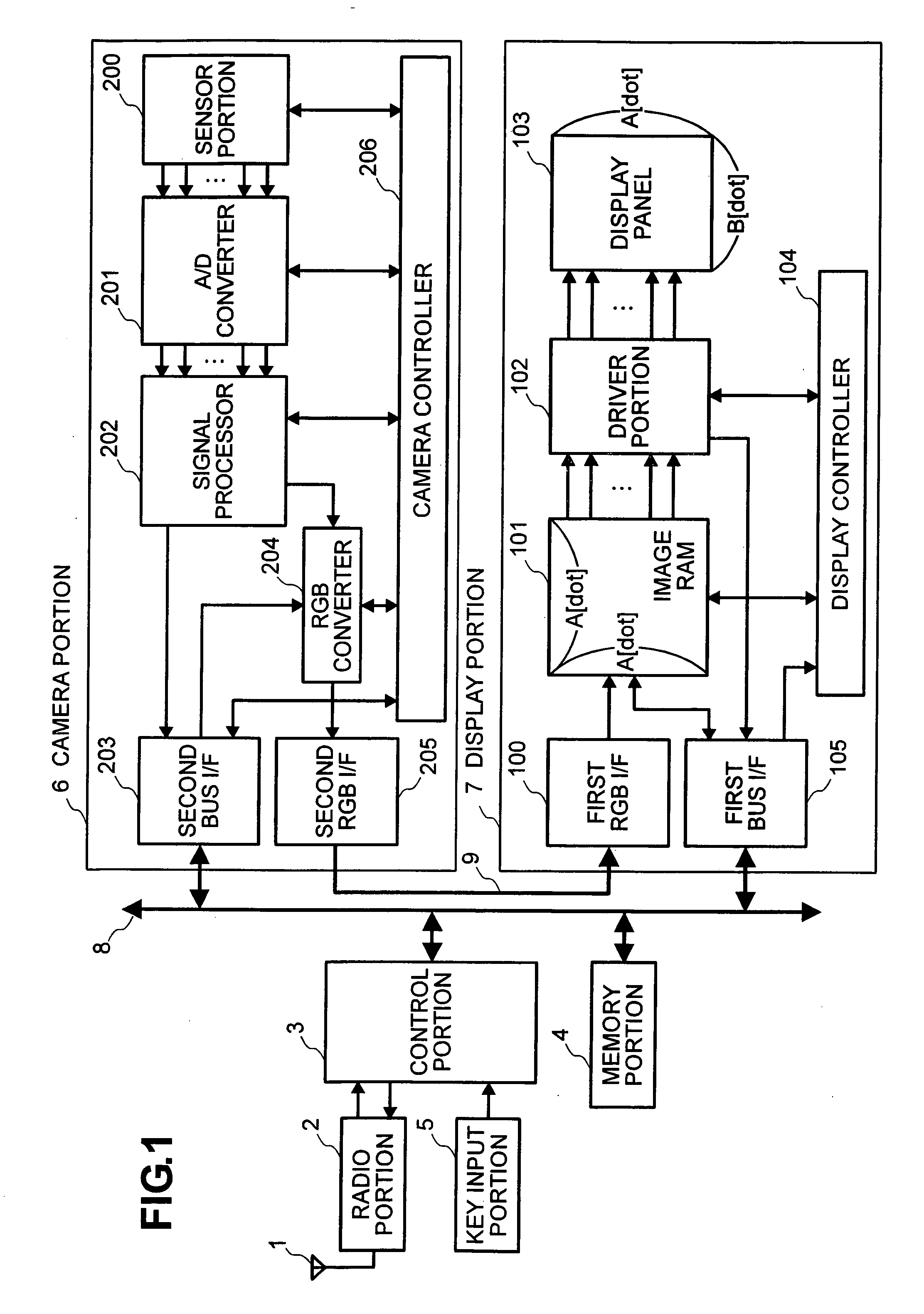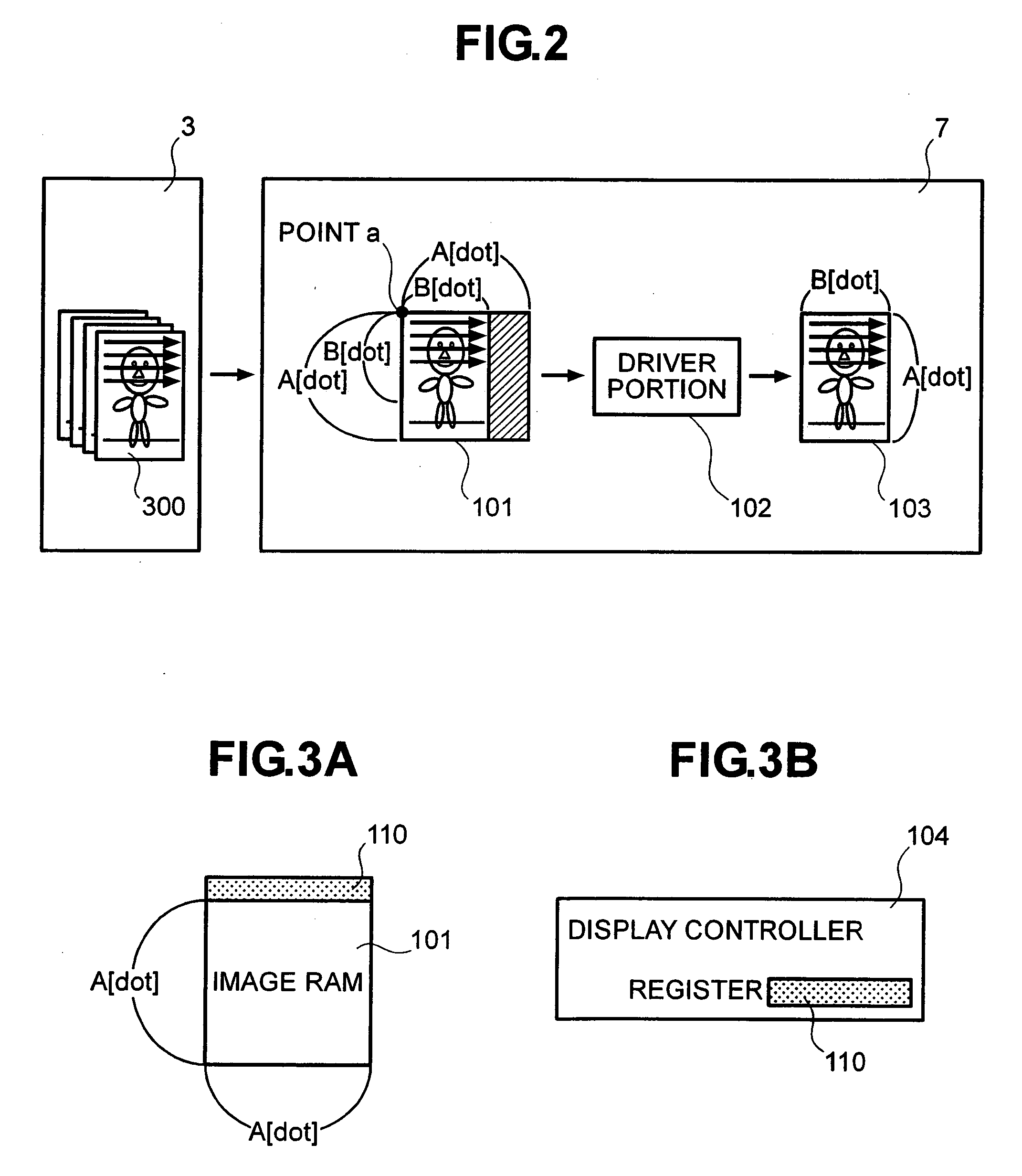Mobile terminal
- Summary
- Abstract
- Description
- Claims
- Application Information
AI Technical Summary
Benefits of technology
Problems solved by technology
Method used
Image
Examples
first embodiment
[0022] An internal structure of the mobile phone according to the invention is shown in FIG. 1, in which an antenna portion 1 is connected to a radio portion 2 which receives and transmits radio signals under control of a control portion 3. The control portion 3 is connected to a key input portion 5 where manipulation of keys by a user is detected. To the control portion 3 are also connected, via a data bus 8 of the control portion 3, a memory portion 4, camera portion 6 and a display portion 7. The memory portion 4 stores data, and also functions as a work area during running of an application. The camera portion 6 operates to take an image, while the display portion 7 operates to display an image. Though it is not shown in FIG. 1, a signal processor dedicated to a speech communication feature rendered by the mobile terminal is also connected to the control portion 3. A microphone and a telephone receiver are connected to the signal processor.
[0023] There will be described interfac...
fourth embodiment
[0062]FIGS. 10A-10C illustrates a posture change or relative rotation of an upper unit 400 and a lower unit 401 of a mobile phone according to the invention.
[0063] The mobile phone according to the present embodiment comprises the upper unit 400, the lower unit 401 and a connecting member 402 which connects the upper and lower units 400, 401 on one of a left side and a right side of a longitudinal centerline of the units 400, 401 as seen in their flip-opened state. The connecting member 402 has three axes and is adapted such that the upper and lower units 400, 401 are relatively pivotable about a first axis of the connecting member 402 to flip-open / close the mobile phone, and also relatively rotatable about a second axis and a third axis of the connecting member 402 each of which is perpendicular to the first axis and which are perpendicular to each other. In FIG. 10, a case where the connecting member 402 is disposed on the right side of the longitudinal centerline of the upper and...
fifth embodiment
[0066]FIGS. 11A-11C illustrates a posture change or relative rotation of the upper and lower units 400, 401 of a mobile phone, according to the invention.
[0067] The user flip-opens the mobile phone. Then, the upper unit 400 is rotated 180 degrees around the second axis of the connecting member 402 in a direction toward the side of the connecting member 402 with respect to the longitudinal centerline of the mobile phone, while the lower unit 401 is held horizontally, so that the upper and lower units 400, 401 are laterally aligned. The mobile phone in this posture is put on a planar surface, e.g., on a desk, such that the longer sides of the display panel 403 extends widthwise, for thereby facilitating viewing for a relatively long time a moving picture which is rotated 90 degrees when displayed on the vertically oblong display panel 403. That is, in such a case, the user can view the moving picture without holding the mobile phone with his or her hand.
[0068] According to the presen...
PUM
 Login to View More
Login to View More Abstract
Description
Claims
Application Information
 Login to View More
Login to View More - R&D
- Intellectual Property
- Life Sciences
- Materials
- Tech Scout
- Unparalleled Data Quality
- Higher Quality Content
- 60% Fewer Hallucinations
Browse by: Latest US Patents, China's latest patents, Technical Efficacy Thesaurus, Application Domain, Technology Topic, Popular Technical Reports.
© 2025 PatSnap. All rights reserved.Legal|Privacy policy|Modern Slavery Act Transparency Statement|Sitemap|About US| Contact US: help@patsnap.com



